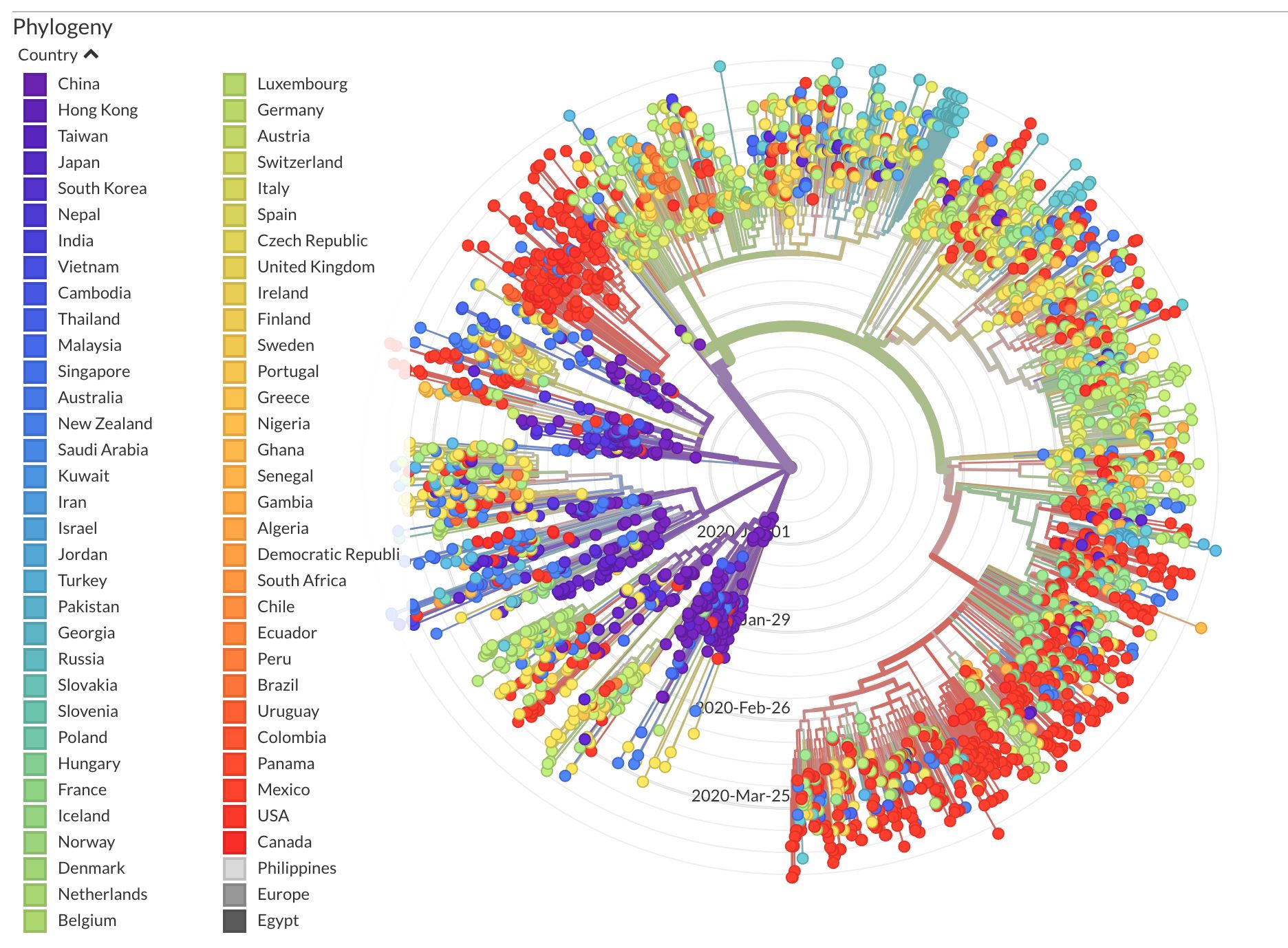April 25, 2020A COVID Battle MapWhenever Heidi gets a headache after coming back from the hospital, I worry about losing her to COVID. But I am very aware that, with the virus already so widespread, the decisive battle is no longer being fought by doctors in the hospitals. They are just buying time, containing the threat just like you and I do when we social distance. The outcome will depend on a race between two global teams furiously trying to hack a dozen proteins. The good guys are thousands of biologists, an historic worldwide collaboration. The bad guys are the random forces of natural selection, the mutations that happen inside each carrier. Thanks to the Bedford lab at Fred Hutchinson, you can see a map of the battlefield here, tracing the random moves made by the bad guys: (data from GISAID)  What are the bad-guy mutations doing? A small study came out of Zhejiang university this week (medrxiv, not peer-reviewed) that hints at the risks as we let the virus propagate and evolve. They did cell-culture studies on 11 samples and found, for example, a 19-fold difference in cell-culture virulence between one version similar to the virus in WA, CA, OR, and VA (not very virulent) compared to one resembling strains in England and France (far more virulent). One of the versions from Wuhan was 249 times worse. (Strains common in NY or Italy were not included.) So as we celebrate that WA state seems to be beating the virus, this study highlights that WA has just beaten one strain. The European strains spreading elsewhere are different and might actually be more deadly. I think is important to contain covid before an even-worse strain spreads, as happened in 1918. Happily, in 2020, we can map out a set of weak points that the good guys can counterattack. Here is a survey paper. Some notable targets:
The New York Times has beautiful renderings of all the molecular attack targets. Unlike in a shooting war, we do not have news reporters going into the battlefield to report on the days wins and losses. But maybe we should. None of these is sure thing. But they all have a chance, and there are real salvos being launched on each of these targets. On both sides, the battlefield is active. Posted by David at April 25, 2020 06:45 PMComments
Whenever Heidi gets a headache after coming back from the hospital, I worry about losing her to COVID. That's it ! Posted by: Hichem Mahmoud at August 10, 2020 08:59 AMPost a comment
|
| Copyright 2020 © David Bau. All Rights Reserved. |